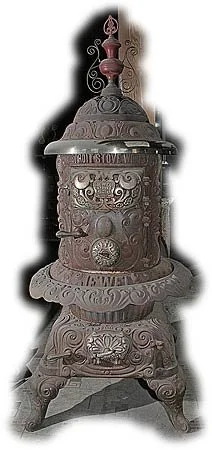
Maunawila Heiau Complex, Self-Guided Tour
Welcome
Your self-guided journey starts here!
Welcome to Maunawila Heiau, the 9-acre sacred Hawaiian temple. This site is classified as a Wahi Pana, or a sacred place. We believe that this heiau was dedicated to the Hawaiian god of peace, fertility, and agriculture Lono. We ask that as you go about the property to behave in a respectful and polite manner.
Mahalo to our community partners!
PROPERTY RULES
Stay on the trail. Roped off areas protect you and the site
Help preserve our wahi pana. Leave all stones and artifacts in place
Appropriate offerings include pule, oli, mele, and hula
Enjoy the property by accessing the self-guided tour
HOW TO USE THE SELF-GUIDED TOUR
Look for the yellow posts. We suggest you go in sequential order as the information provided is progressive
There are a total of 11 posts along the trail. Each post features a QR code in the bottom right corner that you will scan with your mobile device
iOS USERS can open the camera app and hover over the QR code. A pop-up will give you the option to open the webpage. Click the pop-up to follow the link
ANDROID USERS will require a QR scanner app. QR scanner apps, such as QR CODE READER by Green Apple Studio, can be found in the Google Play Store. Open the app and your camera will be ready to scan the QR code and it will show the webpage address or URL and you can open the link in your browser
Each QR code is unique. It will direct you to a specific webpage featuring that particular area. The webpage includes pictures and interesting facts about the area
Enjoy your tour beginning at Post 1. Please refer to the MAP below and follow the purple line
Post 1
History of the McGregor Family
Daniel Pāmawaho McGregor, Sr. was born in Hauʻula to Kaloaokalani, daughter of Kalimahaʻahulu, who was the konohiki of Hauʻula, and Daniel McGregor, a sea captain from Leith, Scotland. Losing his father at the age of one, Daniel Pāmawaho was raised by his mother’s ʻohana in Hauʻula. He later became a substitute teacher in the one-room school in Hauʻula, where he met his future wife, Louise Aoe Wong Kong, who was also a teacher at the school. A native of Maui, Aoe was half Chinese, half Hawaiian and a graduate in the first class of girls from the Kamehameha Schools for Girls in 1897. In 1972, the Kamehameha Schools Song Contest initiated the Louise Aoe McGregor Award for best Student Director, a most prestigious honor.
On August 30, 1906, Aoe was awarded these 9 acres as a Territorial government homestead, one month before she gave birth to her first child, Daniel Pāmawaho, Jr. While living here, she gave birth to four more children, two of whom were stillborn and remain buried in this land. In the 1920’s a fire destroyed their house. Taking this as a hoʻailona (omen) the family moved to Kaluanui, still within the Koʻolauloa district. Since then, the land has remained undeveloped, protecting Maunawila Heiau and its related cultural sites.
The third generation of the McGregor ‘ohana, who inherited the land, sought out partners to help protect the Maunawila Heiau land in perpetuity. The partners include the Hauʻula Community Association (HCA), the Koʻolauloa Hawaiian Civic Club (KHCC), and Hawaiʻi Land Trust (HILT). On July 3, 2014, Hawaiʻi Land Trust (HILT) purchased the Maunawila land. The mission of HILT is “To protect and steward the lands that sustain Hawaiʻi, and to perpetuate Hawaiian values by connecting people with ʻāina.” A dynamic partnership of HCA, KHCC, HILT, and the McGregor ‘ohana manages the Maunawila land for cultural and conservation purposes, in perpetuity. Aloha ʻĀina!
Source: Rossi, Joe; Oshiro, Cynthia; “Vol40 #2 Marion McGregor Lee Loy”; College of Education, University of Hawaii; hdl.handle.net/10125/32869; Accessed August 26, 2019;
Source: Thurman, Rosanna Mari Runyon; “Archaeological Investigations at Maunawila Heiau: Traditional Hawaiʻi in Hauʻulaʻs Backyard”; http://hdl.handle.net/10125/32947; Accessed August 26, 2019;
Foundational rocks of the McGregor home
The alignment of the rocks here suggests that this is the foundation of the McGregor home.
Photo Location: Slightly in front of Post 1, to the right.
Cast iron pieces found on site
Several iron pieces were found in this area. During a student workday while documenting artifacts near the old homestead, three long narrow iron fragments were noticed embedded into the ground. Once the metal fragments were cleaned off to everyone’s amazement, they found the pieces mended together and read “Detroit Stove Works.” The cast iron pieces were then compared with pictures of a Detroit stove and what it used to look like. Detroit was once the “stove capital of the world.” *
*Loomis, B. (2015). When stoves were the hot thing. The Detroit News.
A complete cast iron Detroit stove
Photo Credit: http://www.antique-cast-iron-stoves.com/parlor_heaters_2/6-05_jewel_base_burner_red_top.php
Post 2
Lines of pōhaku
There are many stones you will see today. One stone can be significant but as you see stones near each other, look for lines. If you see three or more stones lined up next to each other, then it could indicate that someone intentionally placed them there or that they could form an alignment. These alignments separate various features or terraces.
Photo Location: Directly ahead of Post 2
ʻAhu Pōhaku
If you look beyond the trees there are two stackings of pohaku (rocks). These seem to resemble ahu (altars). Ahu were often built to mark the line of division from one ahupua’a to the next one. They were also built as places of worship for many different purposes. We found many pieces of coral, which was often left as an offering.
Post 3
Unknown Pit
The pit is earthen with a clearly marked entrance. There are many uses for a pit. Perhaps it was a pig pen or an underground oven. Considering the history of this land that was once abundant with taro patches and healthy flowing streams, it is possible that this pit was once a pūnāwai or freshwater spring. Such springs provided an excellent place to soak kapa and lauhala. It was also a good location for cleansing.
Photo Location: In front of Post 3, beyond the tree
Burial Site
It was a common practice to bury family members and loved ones near their primary home, post-Western contact. Based on oral history gathered from family members of the McGregor ‘ohana, it is believed that this is the burial site of Daniel and Louise McGregorʻs babies that were stillborn.
Photo Location: Left of Post 3
Post 4
Hau Plant
When work began on-site in 2011, the area in front of you was completely covered in hau. Hau is a native plant that has many important uses. In ancient times when plants and land were managed, hau was controlled by confining it to specific areas. Over a century of neglect has allowed the hau to cover most of the property. As the hau was cleared with the help of community volunteers, many wahi kupuna have been uncovered. In front of you is a low mound lined with basalt boulders and filled with ‘ili‘ili (smaller stones). This is a traditional Hawaiian architectural style seen throughout the property. Notice its close proximity to the road. This could be another ahu or burial site that is respected and taken care of as such.
Nā ʻŌpio Program









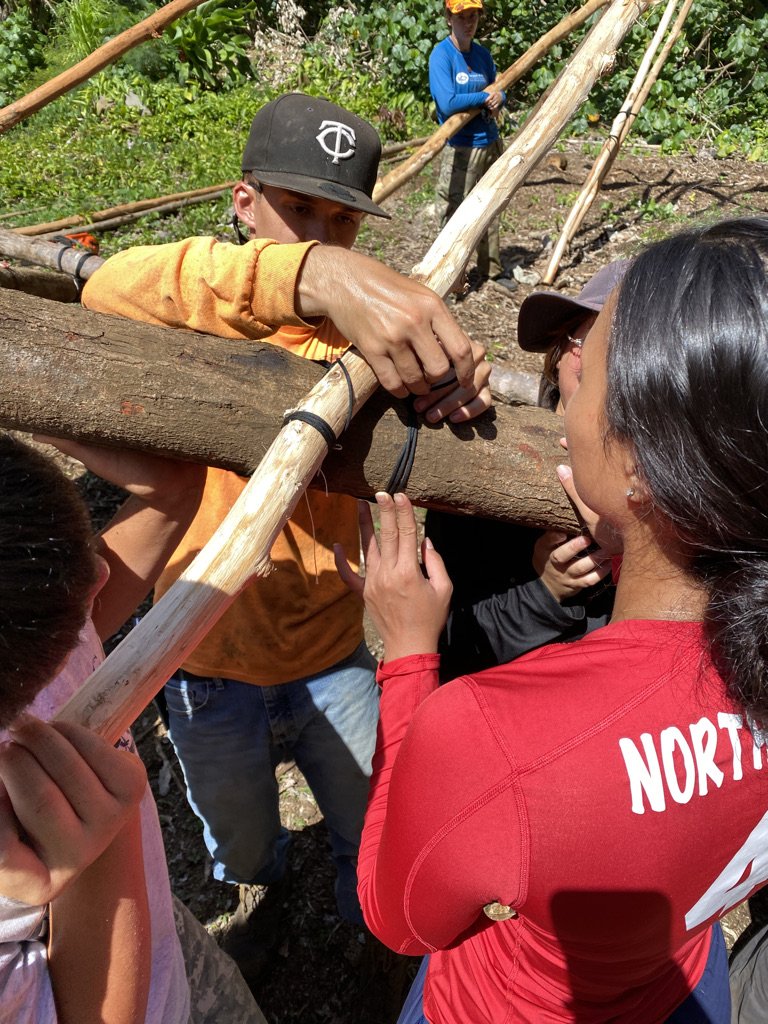

For five weeks in the summer, we employ teenagers ranging in age between 14 and 24 years old. Through this program, they are taught good work ethics. They learn the history of the property and help to maintain it. Here they are clearing an area where another ahu is located.
Hear from ʻŌpio in the community about their experience at Maunawila here: Talk Story with Kilia
Post 5: Ka Hale ʻo Kilia






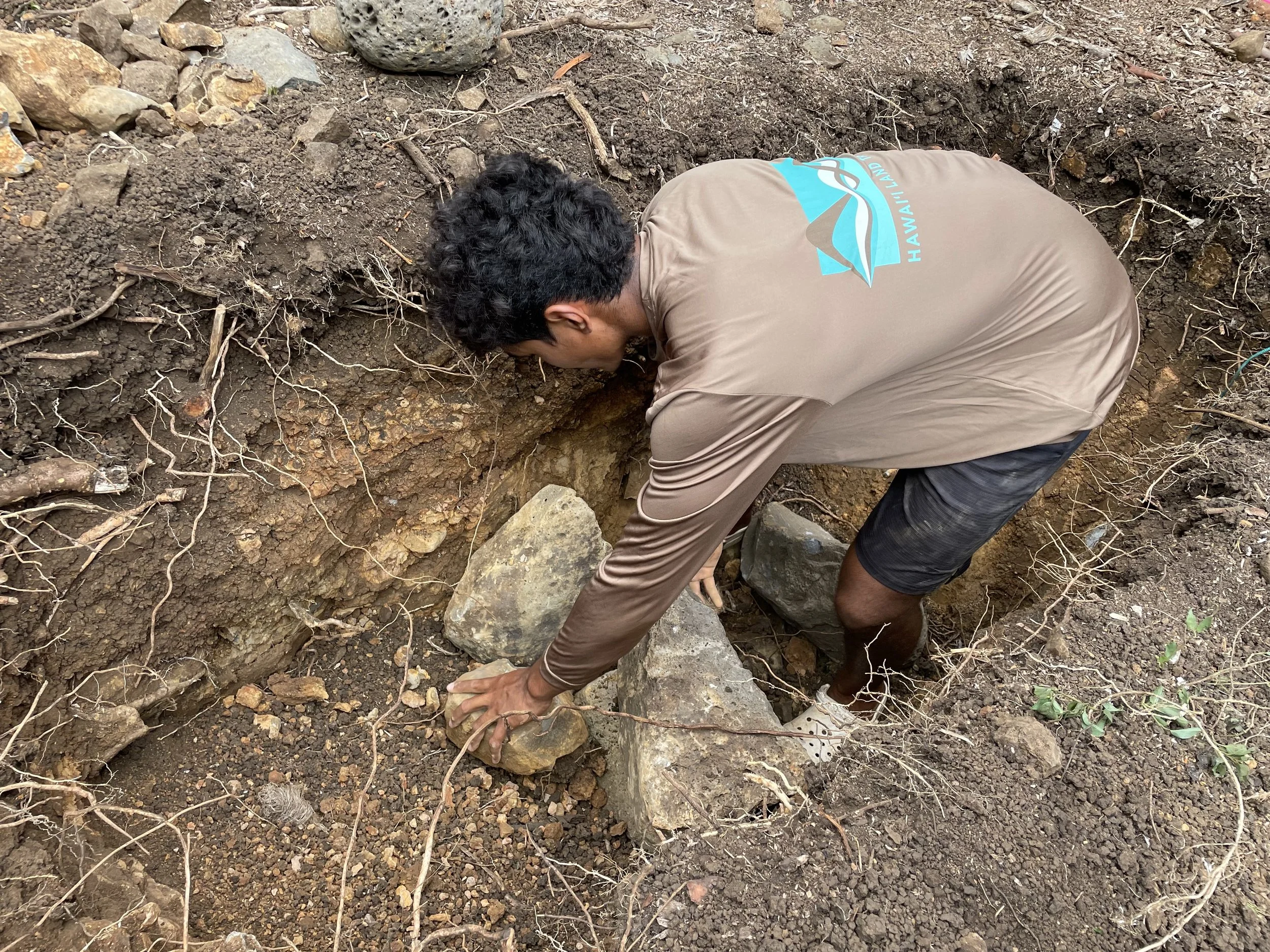


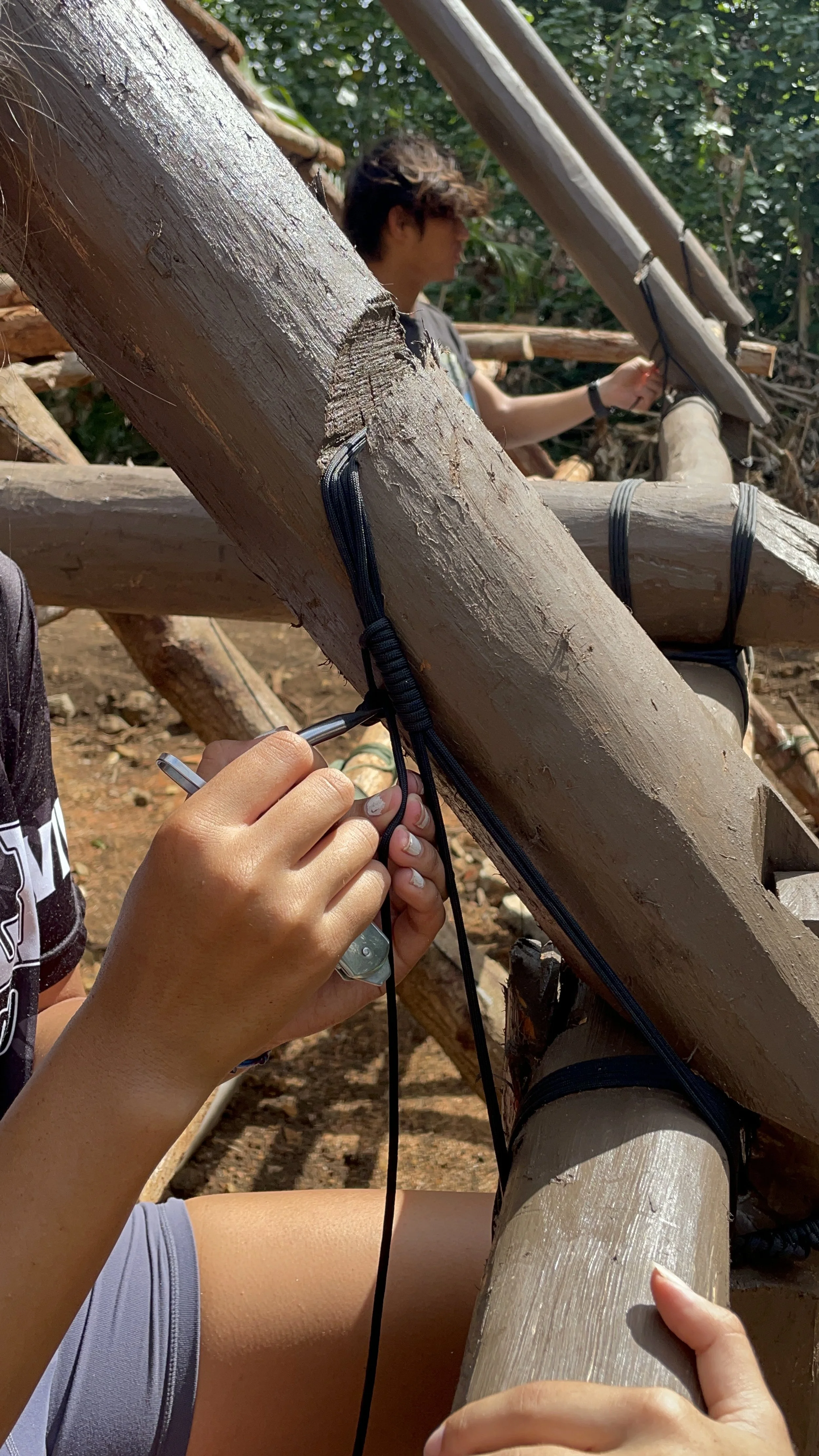

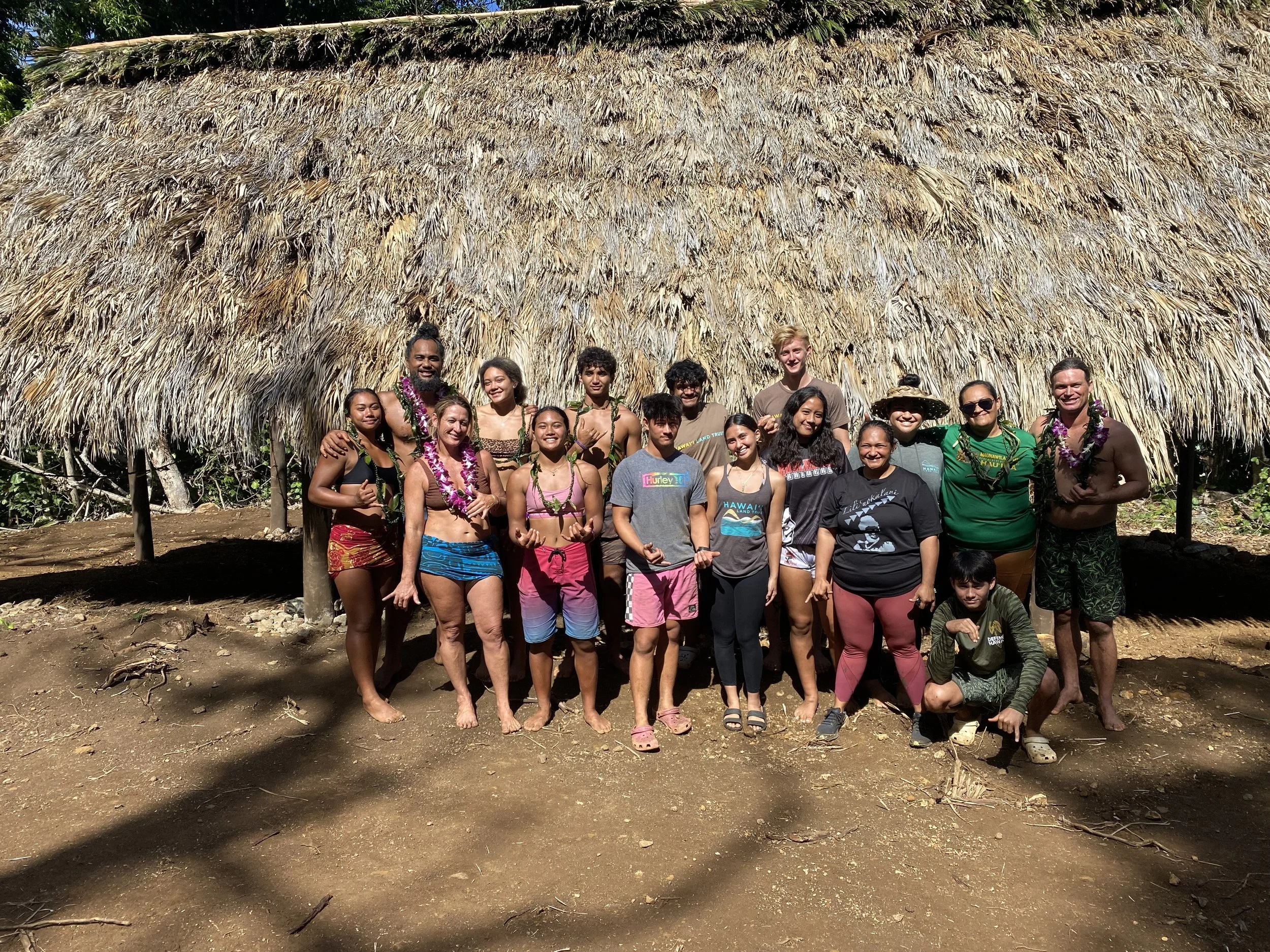


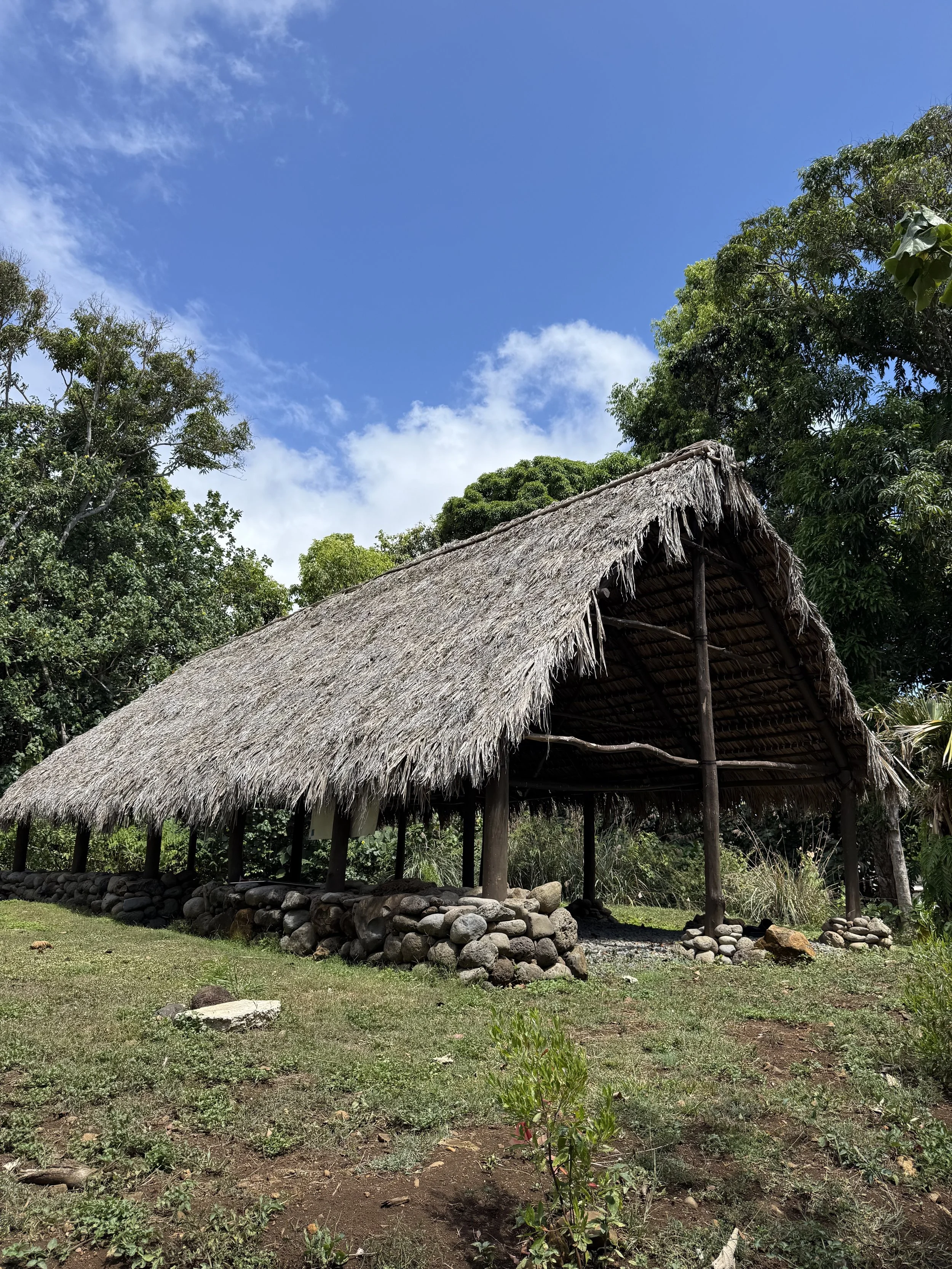
Kilia Hale stands as a testament to community collaboration, cultural revival, and ʻike kūpuna (ancestral knowledge) in action. Built in the fall of 2023 under the skilled guidance of Kaina Makua, Keahi Piiohia, and Kumanoikeala, Hale Kilia was completed in just five weeks through the collective efforts of a dedicated team. Seven interns from Koʻolauloa were hired and partnered with five haumāna from Kauaʻi’s Kumanoikeala hale-building program, forming a multigenerational and multi-island team. With additional kōkua from community volunteers, this hale represents not only physical labor but deep cultural learning and pilina (relationships) strengthened through hana (work).


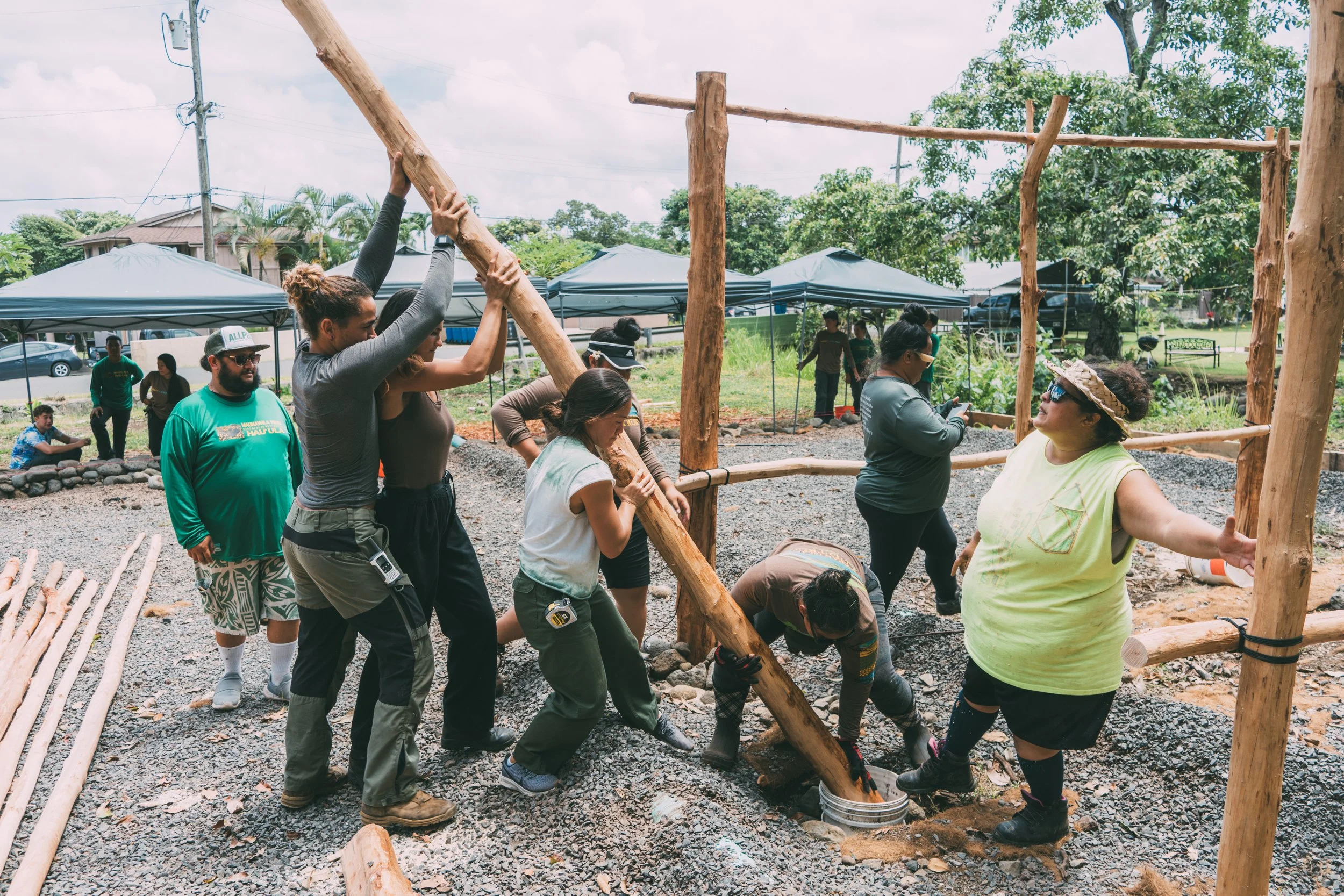

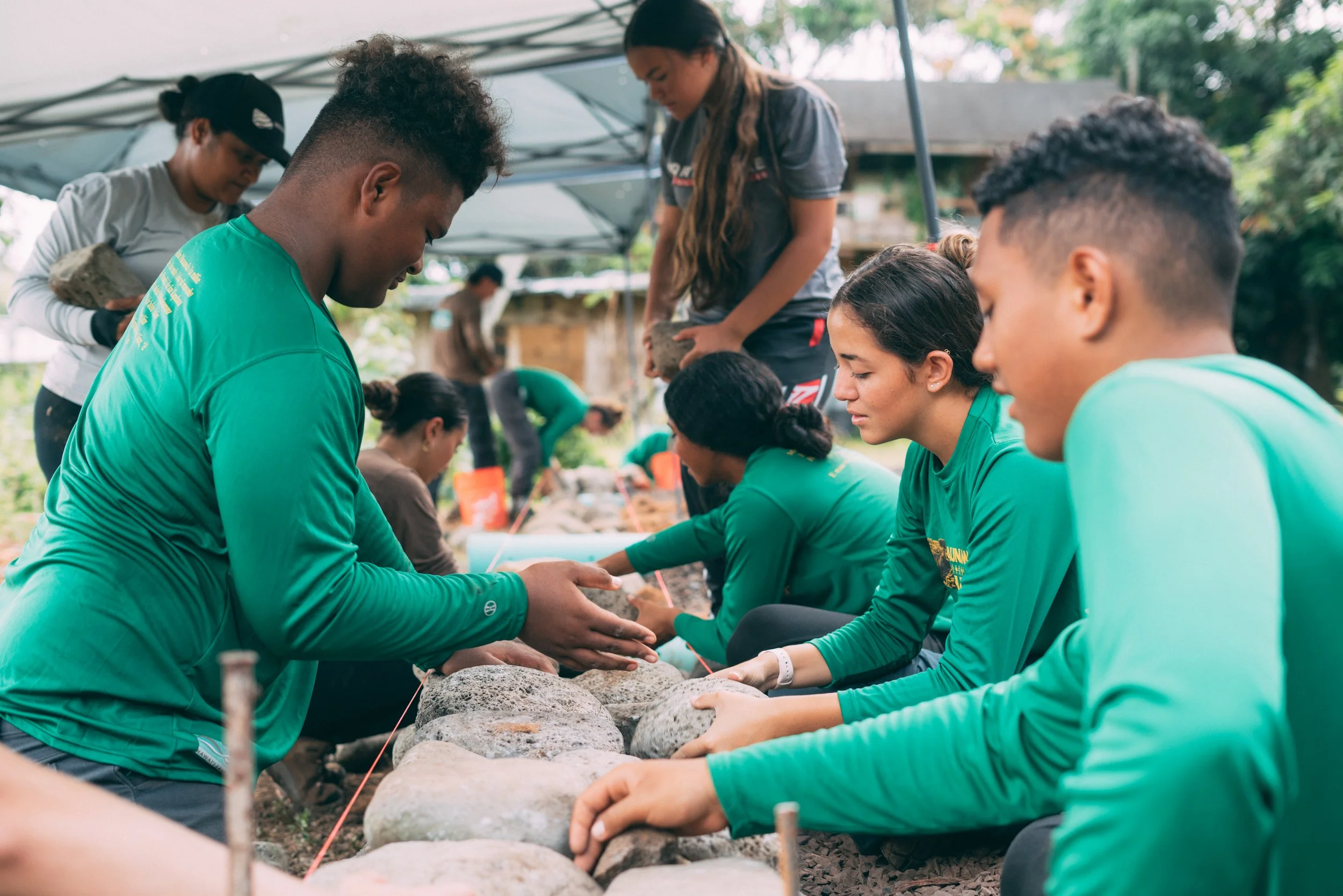







This build was a continuation of the vision which began at Wahiopua Hale, the traditional house near the entrance of the property. Completed in the summer of 2022 under the direction of Tiana Henderson and Indigenous Minds, Wahiopua Hale was constructed over eight weeks by ʻōpio from the community, using wood harvested from the Maunawila Heiau Complex. It served as a foundational project to train, unite, and empower a new generation of cultural practitioners and builders. Together, these two hale reflect a growing movement to restore traditional practices and build spaces grounded in ʻike Hawaiʻi and aloha ʻāina.
Post 6


Kahia Walker, a local teenager, as part of his Eagle Scout project cleared this area. It was covered with thick hau bush and California grass. The intention of his project was to clear a trail. After the clearing of the thick brush, ti plants emerged in perfect rows suggesting that this was a designated ti grove. There will be other laʻau lapaʻau growing here as this was a heiau hoʻōla, a healing heiau.
Mahalo for staying on the path!
Post 7
Maunawila Heiau is very fortunate to host monthly Community Workdays that hosts community members, students from local universities, corporate partners, and visitors to Hawaiʻi.
To attend a monthly volunteer day, sign up through our volunteer page. To coordinate a school or corporate group, please contact Makani Walker - Maunawila’s Steward & Educator.















This bottle is an artifact that was found in this area during one of our Community Workdays. It is a J.A. Palmer and Company of Honolulu Hawaii bottle. It is likely that the bottle is dated between 1884-1894.
Maunawila Heiau and the surrounding areas are not typical archaeological sites. In collaboration with a local archaeology firm, OASES, many traditional Hawaiian and historic artifacts have been documented in this area during clearing of vegetation and mapping of the features and terrain. Many artifacts remain strung across the ground surface and are often found eroding from the clay soil. The anticipation of finding artifacts always heightens the excitement at our Community Workdays.
Hear from Maunawila Heiau Complex Steward & Educator on the importance of aloha ʻāina: Talk Story with Mamo Leota
Post 8
Aerial shot of Maunawila Heiau
Wahi pana is defined as a sacred place. These sacred places have mana (spiritual power) and are treated with respect, honor, and reverence. You should conduct yourself here just as you would in your home or at your place of worship or in your peaceful sanctuaries.
Makuakaʻūmana & Kalaeokapalaoa
Makuakaʻūmana, a kāula (prophet) from Kahiki (Tahiti) became the caretaker of Maunawila Heiau, a heiau hoʻōla (healing temple), upon his arrival in Hawaiʻi. To get to Hawaiʻi from Kahiki, Makuakaʻūmana joined Paʻao, a kahuna (priest) also from Kahiki, on his ship.
When Makuakaʻūmana went to join Paʻao, he noticed that the canoe was already out in the bay leaving Kahiki. To make it to the canoe, he leapt off of Kaʻakōhea, a high cliff in Kahiki, and landed precisely on the momoa (stern platform), like a bird. His leap is remembered in chants that liken him to a flying fish traversing the skies and circling the pillars of Kahiki – a metaphor for his divine journey and connection between realms.
Together, Paʻao and Makuakaʻūmana sailed to Hawaiʻi. As a prophet, Makuakaʻumana would have been seen as an embodiment of the gods, possibly aiding the voyage spiritually.
Upon arriving in Hawaiʻi, Makuakaʻūmana became caretaker of 3 heiau in Koʻolauloa - Maunawila, Kaunihokahi, and Kapoho - creating a sacred triad associated with healing and agriculture.
Akua (Gods) Kanaloa and Kāne would visit Makuakaʻūmana at Maunawila and praise him for his work. During one of their visits, they warned Makuakaʻūmana to stay at the heiau and away from any commotion involving a whale at Kalaeokapalaoa, the beach now known as Hauʻula Beach Park.
One day, a palaoa (sperm whale) had beached itself with its tail on the beach and its head in the water. A crowd formed, with some people jumping off its head, thinking it was dead. The kāula, forgetting what Kanaloa and Kāne had told him, joined the commotion and soon found himself climbing the whale and jumping off not one time, not two times, but three times.
On his third jump from the head of the palaoa, he was swallowed whole and taken back out to sea - some say back to Kahiki.
In some variations of this moʻoleo, Makuakaʻūmana was taken to Kanehunamoku, the sacred hidden land of Kāne and Kanaloa. He then returned to Oʻahu, lived to an old age, and was buried in a cave near Koʻolaupoko, wrapped in kapa by his son.
In another version, it was Makuakaʻūmana’s son who was swallowed by the palaoa and taken to Kahiki, where he trained under Kāne and Kanaloa before returning to Hawaiʻi as a revered kahuna.
Source: Pukui 1953 Cited in Sterling and Summers 1978: 161
After learning the moʻolelo of Maunawila, the keiki (children) of Hauʻula Summer Fun 2017 collectively painted these pictures to share what they learned with their family.
Listen to the moʻolelo of Makuakaʻūmana’s voyage to Hawaiʻi here.
Listen to the moʻolelo of Makuakaʻūmana’s time as caretaker of Maunawila here.
Post 9
Mahalo for staying on the path!
This is what the heiau wall looked like before work began on clearing the area
In 1819 when the kapu system (ancient religious law) was abolished by Queen Regent Kaʻahumanu, most heiau around the Kingdom of Hawaiʻi went unmaintained. Contributing factors to the deterioration of Maunawila Heiau include the original destruction from the abolishment of the kapu system. Heiau were burned down and destroyed. Other factors include wild cattle in this particular area and natural erosion.
Heiau across Hawaiʻi were all dedicated to different gods and were built under the direction of the aliʻi nui or the ruling chief. Thus, there are several different types of heiau and its purpose could change with the changing of leadership. Physical evidence found throughout the property, and oral stories shared by the local elders, indicate that Maunawila is a heiau hoʻōla, a healing heiau for treating the sick and training in the art of healing.
Photo location: In front of Post 9
Laulima – it took many hands to build such large structures. Absent of modern concrete and cement, walls and structures were built using a dry stacking technique. There are four stages:
Niho – These are larger boulders that were strong enough to bear the weight of the structure
Alo – These are face rocks. These stones were selected because of their flat surfaces that would face outward and were most aesthetically pleasing. This is the body of the wall. There would be layers and layers of these face rocks.
Hakahaka – These are the smaller rocks that were used as filler rocks. They are poured into all the spaces and crevices created by the Niho and the Alo layers. Even smaller than that, sand would follow the small filler rocks. The combination of the small rocks and the sand would lock all the stones in place.
Papale – The cap or the top of the wall. This is where thinner rocks with flat surfaces would be placed at the very top to cap the wall and to complete it.
While nothing is definitive, through stories passed down from kupuna, we guess that this rock had the following functions:
Altar for offerings
Herbal medicine preparation
It is shaped similar to the island of Oʻahu
The middle point on the rock is aligned perfectly and the shape is identical with the shape of the mountain directly behind it
Post 10
Coral slabs are found at three of the four corners of this heiau. Moʻolelo from kupuna and the discovery of coral slabs used at another heiau in the area indicate that the coral slabs are a trademark of the Keaunui family. The Keaunui ʻohana was the last known konohiki of Hauʻula. Most of the native Hawaiians living in Hauʻula are descendants of the Keaunui line. They incorporated coral in any structure they built. Again, we emphasize the value of laulima. Cutting the coral and moving these large structures from the ocean to the mountain required laulima, the use of many hands to make the workload light.
Photo Location: In front of Post 10, slightly to the left
It is possible that the pockets in these boulders were used to activate certain medicinal plants. They are facing the ocean where the sun rises to capture the energy. The various sized craters in the boulders were possibly forms of measurement used for different plants used to make traditional medicine.
Post 11
Over the years of clearing and maintaining the heiau, more and more features have appeared or shown themselves. We call this stone the piko (navel) stone because it is in the center of the heiau. The Piʻilanihale Heiau on Maui has a similar piko stone.
In addition to being a kāula (prophet), Makuakaʻūmana was also known as a kilo (a stargazer, astronomer, or seer). It is possible that Makuakaʻūmana used the movement of celestial objects to determine the ideal time and space for planting and healing. Based on our observation of Maunawila, it appears that Maunawila was also constructed as a solar observatory to measure the movement of the sun and mark the solstices and equinoxes. The sun appears to align with the “center stone” at Maunawila when it rises on Ke Ala Polohiwa a Kanaloa, Winter Solstice, and sets on Ke Ala Polohiwa a Kāne, Summer Solstice. The sun also appears to align with the corner coral stone during the equinoxes.
MAHALO
Thank you for visiting Maunawila and for respecting this special place. We hope that you learned something new and that you will share your experience with others. Please stay on the same path going back down.






